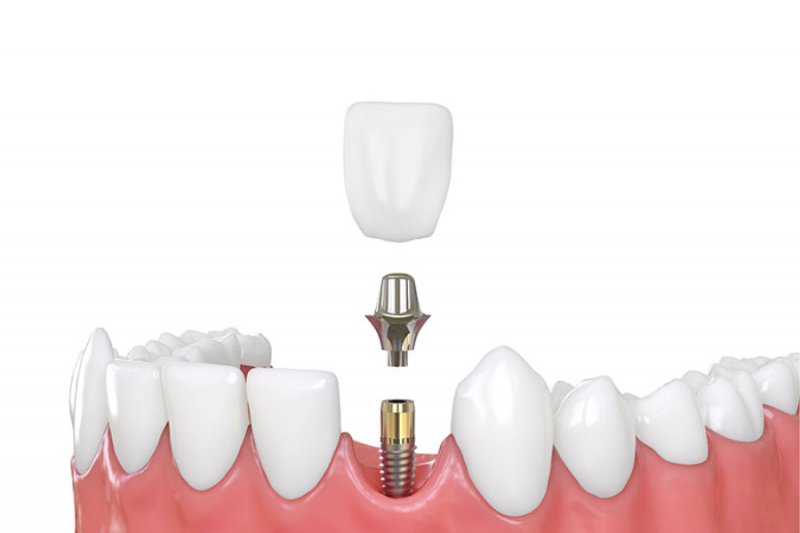You should think about getting implants if you want to close the space left by missing teeth.
Dental implants come in a variety of varieties. The number of missing teeth, the state of your gums and jawbone, your general health, and other factors will all influence which type is best for you.
The dentists at Pristine Dental works advise using dental implants in Singapore even if there may be other options available because they are a trusted and more durable way to restore missing teeth.
The many implant kinds described in this article are discussed, along with which one is most likely to be a good fit for you.
How do dental implants work?
In order to replace a lost or missing tooth, a dental implant is a root-like device or screw that is surgically placed in the jawbone area of the mouth. Although implants in and of themselves are not teeth, they provide the support system required for the artificial teeth to firmly affix.
If you want more permanent teeth, dental implants are the surgery that is most frequently advised for self-treatment.
Three fundamental parts make up a dental implant:
The device: This acts as a root to hold the teeth or crown in place and resembles a screw.
The Abutment: This component aids in securing the implant to the crown.
The sceptre: The fake teeth that are being affixed to the abutment are these.
Together, these three components make up the dental implant.
What kinds of dental implants are there
Dental implants are available based on two factors: the quantity of missing teeth and the site of the implants. Below is a discussion about them.
Types of dental implants according to the number of missing teeth
tooth implant and crown
When a tooth is lost or when two or more adjacent teeth are missing, a dental implant with a crown is the best option. In order to replace the missing teeth, the crown can be inserted using this.
Also, only a crown and an implant are employed. The crowns or teeth are therefore held in place by the implants.
Dental Bridges and Implants
When two straight teeth are missing, a dental implant with bridges is the best option. A crown won’t be necessary in this situation because the bridge will be able to readily replace the two or more missing consecutive teeth.
To adequately support the bridge of teeth that will be employed, two extreme regions of the gum or jawbone are therefore each given a dental implant. And in contrast to a dental implant with a crown, two implants will be placed here at the two extremes of the gap left by the missing teeth. Then a set of teeth, typically three or more, will be added to fill the space left by the missing teeth.
This type of implant will be most appropriate if you are missing three adjacent sets of teeth.
Implants for dentures
People without a dental arch are the best candidates for denture implants. Since a dental crown or bridge will not be appropriate in this situation, a particular kind of denture will be inserted instead.
This is the type that should be used if both the upper and lower jaws are completely missing teeth since it is permanently put in the gum area. Unlike the traditional dentures that had been used in the past, denture implants cannot be removed and so they do not slide, lose, or shift and they do not cause soreness like the traditional dentures.
Depending on where the implant will be inserted, dental implants
Endosseous Implants
Based on the area of the body where the implant will be placed, this is the type that is utilised the most frequently. It works best when the jawbone is in good health. In order to use an endosteal implant, you must make sure the implant is drilled into the jawbone, which is located below the gum line, and then connected to the crown using an abutment.
Supraperiosteal Implants
Contrary to endosteal implants, these are less frequently utilised, and they require placing the implants on the jaw or just above the gum line. They are put just above the jawbone as opposed to being implanted into the endosteal.
This kind is best for patients who don’t want bone augmentation and who don’t have adequate jawbone.
Implants zygomatic
When there is not enough jawbone for endosteal and when a patient does not want to employ bone augmentation, the zygomatic implant is used. Therefore, more implants are used here than were required for the endosteal implants since they are placed in the cheekbone or the zygomatic bone rather than the jawbone.
What type of dental implants is best for you?
An implant with a crown is the best option if you only have one lost tooth. A dental implant and bridge are appropriate when one to three teeth that are adjacent to one another are lost. A denture implant will be the greatest option if it is for the entire denture.
However, a dentist would probably advise you to get an endosteal, subperiosteal, or zygomatic implant depending on the condition of your jawbone.
The endosteal will work for you if the jawbone is in good shape. Consider a subperiosteal implant if you don’t want one inserted into your jawbone.
You can only use Zygomatic if your jawbones are too weak to sustain the implant. It is best to adhere to the advice provided by a dental professional in either of these situations.
Conclusion
A fantastic approach to restore missing teeth is with dental implants. Once you have made the appropriate choice, you won’t need to perform as much maintenance. Different kinds may be utilised, but make sure you collaborate carefully with your dentist to select the finest one for you.
We highly propose the qualified dentists in Singapore if you require dental implants. Teeth implants provide a long-lasting and efficient remedy for lost teeth.
Dental implants can enhance your oral health and aesthetics in addition to being long-lasting and durable. Make an appointment with a reputable dentist to book your consultation and find out more about the advantages of dental implants.




